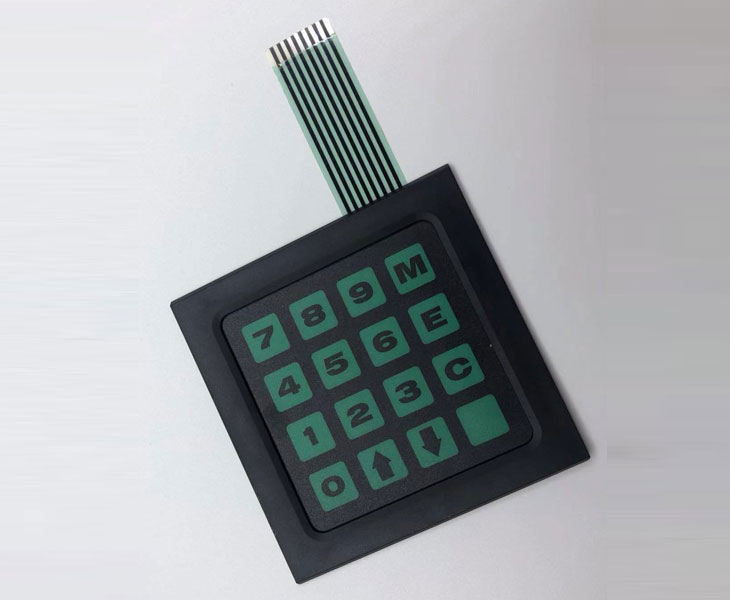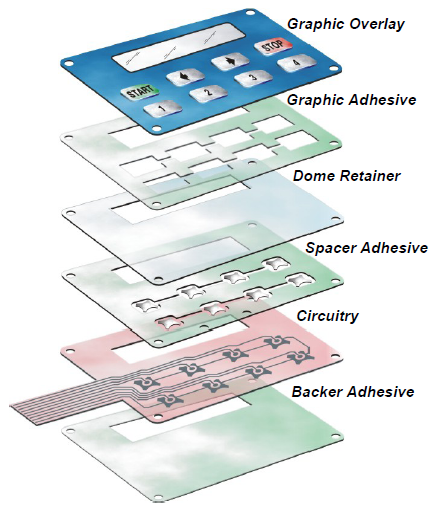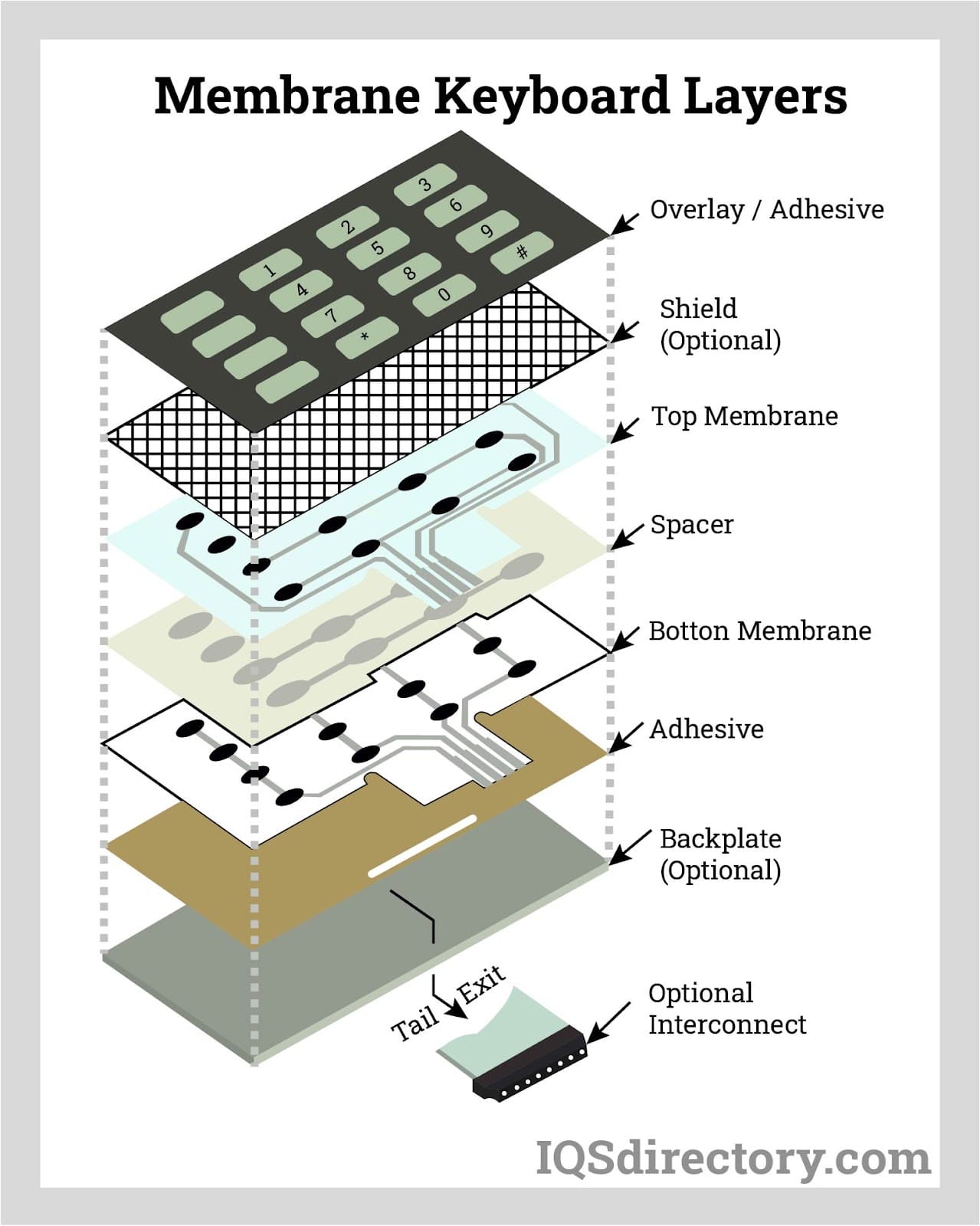The Production Process Behind Membrane Layer Change: What You Need to Know
The production process behind membrane layer switches combines cautious design, product option, and quality assurance. It starts with understanding the ins and outs of membrane button layout and advances via different stages, consisting of product options and printing strategies. Each phase plays a crucial duty in making sure functionality and toughness. The intricacies of layer building and the strenuous testing requirements might reveal insights that are not promptly apparent. What lies beyond these fundamental components?
Understanding Membrane Layer Switch Over Design
Membrane buttons might show up simple at first glance, their design involves elaborate considerations that guarantee performance and longevity. The design process begins with a comprehensive understanding of individual demands, including the interface's intended application and environmental factors. Ergonomics is a crucial element, as the layout must help with simplicity of use while guaranteeing that tactile responses fulfills customer expectations.Moreover, the layering of elements, such as graphic overlays, adhesive layers, and conductive traces, need to be exactly engineered. membrane switch. This layered arrangement not just affects the switch's responsiveness but likewise influences its durability. Attention is provided to the securing strategies utilized to secure against dampness and dirt, which might compromise performance. In addition, layout factors to consider encompass appearances, where color pattern and aesthetic quality improve individual experience. Ultimately, the design of membrane changes equilibriums performance, user experience, and longevity, making sure that they satisfy the needs of various applications properly
Materials Used in Membrane Switch Over Manufacturing
When choosing materials for membrane layer button production, it is important to contemplate both performance and resilience. The key products include polyester and polycarbonate movies, which give adaptability and strength. These movies are often coated with adhesive to assure correct bonding to substrates. Conductive inks, normally composed of silver or carbon, are critical for producing electric links within the switch, enabling trustworthy operation.Additionally, a protective layer, such as a tough coat, is regularly related to improve scrape resistance and durability. The option of backing product, such as acrylic or foam, can considerably impact the switch's tactile feel and total individual experience. Furthermore, various environmental elements, consisting of temperature and humidity, need to lead product option to guarantee peak performance in certain applications. Eventually, the ideal combination of materials adds to the membrane layer switch's capability and life-span, making educated selections essential for makers.
The Printing Refine: Creating Graphics and Text
The printing process in membrane switch manufacturing plays a substantial role in producing top quality graphics and message. Numerous graphic design strategies are used to guarantee visual appeal and capability, while cautious ink selection techniques are essential for longevity and efficiency. Recognizing these components is essential for attaining best cause membrane button style.
Graphic Design Techniques
Graphic design methods play an essential function in the printing procedure of membrane switches, as they define exactly how graphics and message will inevitably appear on the end product. Reliable graphic layout entails the critical use typefaces, designs, and colors to improve readability and visual appeal. Developers frequently make use of vector graphics for scalability, guaranteeing that pictures remain sharp at numerous sizes. Furthermore, focus to contrast and positioning is important, as it affects individual communication and visual top quality. The incorporation of branding aspects, such as logo designs, have to be handled with like maintain brand honesty. Generally, thoughtful graphic style techniques add considerably to the performance and beauty of membrane layer switches, affecting customer experience and item performance.
Ink Selection Approaches
Choosing the appropriate ink is necessary for attaining the desired visual quality and durability in membrane button manufacturing. Numerous ink kinds are made use of, including solvent-based, water-based, and UV-curable inks. Each kind offers unique attributes, such as flexibility, adhesion, and resistance to ecological aspects. Solvent-based inks are usually favored for their durability and dynamic colors, while water-based inks are much more ecologically friendly however may have limitations in adhesion. UV-curable inks provide rapid curing and robust efficiency. In addition, shade matching methods ensure that the selected inks align with layout requirements. Ultimately, the choice of ink must take into consideration variables such as application approach, substrate compatibility, and end-use requirements to achieve remarkable lead to membrane button graphics and message.
Layer Building and Assembly

Material Choice Process
A careful selection of materials is vital in the production procedure of membrane layer buttons, as it straight influences functionality and toughness. The main products utilized consist of polyester, polycarbonate, and different conductive inks. Polyester is commonly preferred for its exceptional resistance to chemicals and abrasion, making it appropriate for rough environments. Polycarbonate, on the other hand, gives superior quality and influence resistance, which is valuable for applications calling for presence and effectiveness. Conductive inks, normally made up of silver or carbon, are essential for developing trustworthy electric pathways. Additionally, the selection of glue materials impacts the overall integrity of the button - membrane switch. Reviewing aspects such as environmental exposure, responsive comments, and aesthetic needs overviews producers in choosing the best products for their certain applications
Layer Bond Techniques
Sticking layers in membrane switch building and construction is a crucial process that assures capability and durability. Various bond techniques are used to protect perfect bonding in between layers, which usually include the usage of adhesives, warm, and stress. Pressure-sensitive adhesives (PSAs) are frequently utilized for their convenience of application and immediate bonding capacities. Additionally, thermal bonding strategies can be applied, where warmth is made use of to turn on adhesive properties, protecting a solid bond. The option of attachment method mainly depends on the materials involved and the details application requirements of the membrane layer button. Proper positioning and consistent application of adhesives are vital to prevent problems, safeguarding the switch operates properly throughout its intended life expectancy.
Quality Assurance Steps
Ensuring top quality control during the layer building and setting up of membrane layer switches is vital for keeping efficiency and reliability. This process normally entails several important steps, including detailed inspections at each stage of production. Makers make use of innovative screening approaches, such as peel examinations and adhesion assessments, to confirm the stability of layer bonds. In addition, aesthetic examinations are performed to recognize any kind of issues in printing or product inconsistencies. Environmental conditions, my company such as temperature and humidity, are carefully monitored to guarantee perfect curing and adhesion. Moreover, regular calibration of tools aids keep specific production requirements. By executing these quality assurance steps, manufacturers can greatly lower the threat of product failure, guaranteeing that the last membrane switches fulfill the called for specs and customer assumptions.
Examining and High Quality Control Steps

Technologies in Membrane Switch Modern Technology
As improvements in technology proceed to develop, membrane layer buttons are gaining from cutting-edge advancements that enhance their capability and individual experience. One notable advancement is the integration of capacitive touch modern technology, which enables for even more user-friendly and receptive individual interfaces. This change not only boosts looks but additionally reduces mechanical damage, extending the life-span of the switches.Additionally, developments in visuals overlay materials have resulted in improved longevity and resistance to environmental aspects such as moisture and UV light. These products now provide boosted clarity and brightness, more elevating the visual appeal.Furthermore, the unification of clever technology is transforming membrane layer switches over into interactive control panels, allowing connection with IoT devices. This connectivity promotes a smooth customer experience, leading the way for applications in numerous sectors, from medical care to customer electronics. Collectively, these advancements placement membrane layer switches as vital elements in modern-day tool design.
Frequently Asked Questions
Exactly how Lengthy Does the Membrane Layer Switch Manufacturing Process Take?
The duration of the membrane switch manufacturing process can vary considerably. Elements such as complexity, materials utilized, and production volume influence timelines, with common production ranging from a few days to Click Here several weeks for completion.
What Are the Common Applications for Membrane Switches?
Membrane layer buttons are frequently used in different markets, including automobile controls, home appliances, medical devices, and customer electronic devices (membrane switch). Their convenience and toughness make them excellent for applications needing easy to use interfaces and dependable performance in varied atmospheres
Can Membrane Switches Be Customized for Details Demands?

What Is the Life expectancy of a Normal Membrane Layer Switch Over?
The lifespan of a regular membrane switch varies, but typically, it ranges from 1 to 5 million cycles. Elements such as use, atmosphere, and worldly high quality substantially affect longevity and overall efficiency gradually.

Are Membrane Layer Switches Over Eco-friendly?
The environmental friendliness of membrane layer switches over differs. Some materials made use of might not be recyclable, while others can be green. The general impact relies on producing methods and materials, requiring careful factor to consider during selection and disposal. The production procedure behind membrane switches over combines cautious design, product selection, and top quality control. It begins with understanding the details of membrane layer switch layout and advances through different stages, consisting of material selections and printing methods. When selecting products for membrane layer switch production, it is vital to contemplate both efficiency and resilience. A mindful choice of products is vital in the production process of membrane layer switches, as it straight influences performance and durability. The option of adhesion technique largely depends on the materials entailed and the particular application needs of the membrane button.